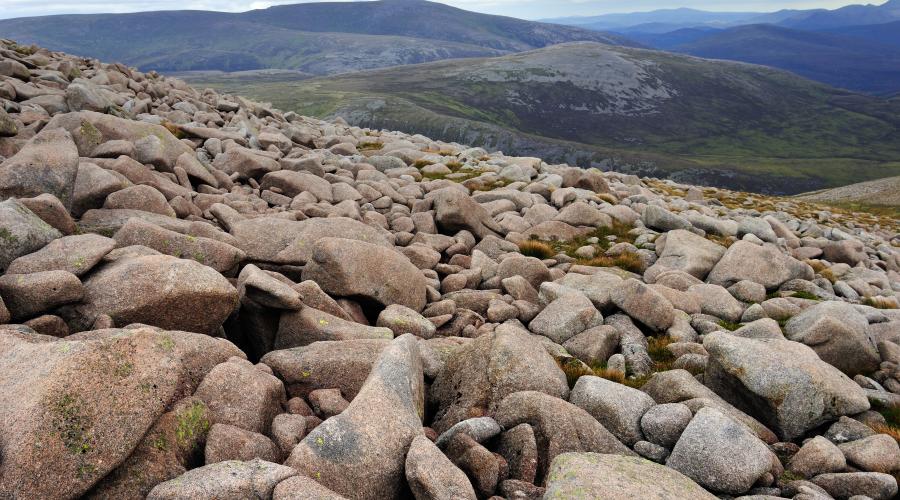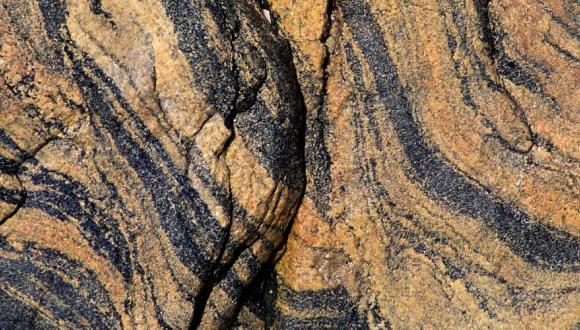
Inland rock
Rocky outcrops occur as part of a mosaic of other habitats. Inland rock represents a limited but distinctive habitat.
Inland rock is an important part of any mountainside, as the sharp ledges, scree and rocky slopes support a wide diversity of species. Often quite limited in extent and sometimes fragmented, this habitat mostly occurs at high altitude.
Inland rocky areas are split into two groups:
- calcareous – or lime rich
- siliceous – or acid rich
It’s not unusual for a calcareous band to run through a siliceous rock. This lets plants with different needs grow side by side in the cracks in the rocks. Such variety allows a broad range of mosses and liverworts (bryophytes), lichens and plants to flourish.
The inaccessible and unstable nature of the rocky habitat may protect the vegetation somewhat from herbivores.
Small part of Scotland’s land cover
Inland rock is hard to map as it’s part of a mosaic of other habitats and can cover very small areas. Geological maps may help to identify potential areas of interest.
We don’t know exactly how much of Scotland is covered by this habitat, but it’s likely to be a very small percentage.
Sustainable level of grazing
Inland rock is very important as it supports many rare species that demand the conditions provided by the rocky slopes. Plants can thrive in the enriched soil. But the fragile habitat may suffer from overgrazing, as the rich and diverse vegetation attracts herbivores.
Areas of inland rock need a fine balance in terms of grazing, as they can also suffer decline if there’s too little grazing. Surrounding scrub will encroach onto the rich rocky areas and outcompete more delicate species if this happens.
Interesting inland rock species include:
- alpine woodsia
- green spleenwort
- Wilson’s filmy-fern
- tufted saxifrage
Many of these plants have very limited distribution.
Rocky areas provide important locations for nesting birds. Golden eagles favour inaccessible eyries, where they can safely rear their chicks.
Benefits of inland rock for people
- Climbing and hiking – rocky areas are popular with climbers and hillwalkers of all levels of expertise.
- Bird watching – the rocky slopes and ledges provide nesting sites for many of Scotland’s iconic upland birds.





